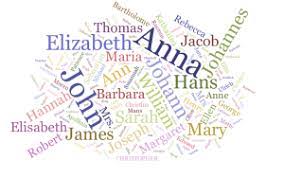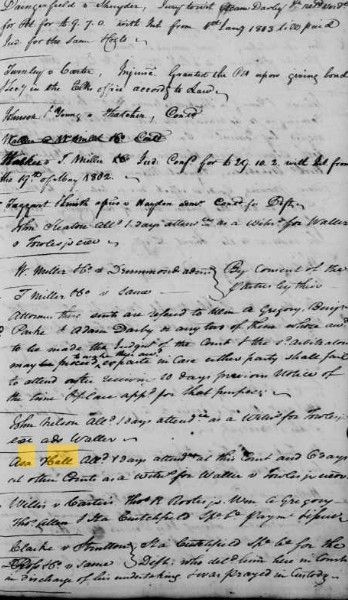Are You Doing Research or Collecting Names?
Exploring the Differences

Hopefully the title of this blog article caught your attention! I do not mean to offend anyone but within the genealogical community, there are essentially two types of researchers – those who do the research and those who collect names.
What are some signs you could be a name collector?
- Do you copy what others have put together, perhaps on the internet, without source citations?
- Do you know how to properly distinguish between individuals of the same name?
- Do you accept information you find in a book or on the internet without source citations?
- Do you go to Ancestry.com, FamilySearch.org, My Heritage, or some other website which allows anyone to submit a family tree and copy that information into your own tree without verification and sources?
- When you encounter a new piece of information, do you accept it without question?
- Do you accept everything Aunt Sally or Cousin Bob sent to you, even without appropriate source citations?
If you are doing any or all of the above, I would suggest you are merely collecting names and not performing genealogical research. True research requires us to meet the Genealogical Proof Standard. Its five elements are: (specifically notice #2 and #3)
·
1) reasonably exhaustive research;
2)complete and accurate source citations;
3) analysis and correlation of the collected information;
·4)resolution of any conflicting evidence; and.
·5) a soundly reasoned, coherently written conclusion.
All of these are significant and must be followed to establish proof from a genealogically accurate perspective. Failure to do so is merely collecting information and passing it on unchecked.
I certainly understand that time and a lack of access to resources can hinder us in doing this and I will admit that I have, on occasion, succumbed to the urge. Yet we should not do so!
Is it okay to speculate and hypothesize in genealogy? Absolutely! That helps us to find the answers but always clearly mark any speculation as that - do not state it as a fact until it has been proven.
After years of working on various problems, it is my considered estimation that considerably more than half of the family trees on Ancestry.com are incorrect. And remember that the trees on FamilySearch.org can be altered by anyone at any time – no proof or source citation is required. . Now, don’t get me wrong – the original source records provided on these websites are wonderful and a godsend to the genealogical community. But remember that the trees on these sites can be submitted by anyone and no documentation is required. For example, there are thousands of trees on Ancestry which only cite Ancestry.com itself as a source (in other words, they merely took information from the tree of another researcher).
Should you forget about using these resources then? No, certainly not! Use them, but use them cautiously as potential clues. Then hunt out the original records to prove or disprove each statement of fact.
To drive home my point, please check out the Sample Research Report on John Jackson Dixon on the Backstory Bloodhound website. In this research, I used courthouse records to prove that John Jackson Dixon who died in 1863 was an heir and likely the son of John Dixon of Pope County, Illinois. You will note that all three trees which mention a name for his father on Ancestry.com were wrong – they all referenced a Thomas Dixon who lived in a completely different section of the county – geography matters in genealogy! In addition, all 92 trees on Ancestry.com which give information on this John Dixon who died in 1854 in Pope County state he married an Elizabeth Catherine Ward in 1814 in Fleming County, Kentucky. The John Dixon of Fleming County did marry an Elizabeth Ward there but a little further research into his War of 1812 pension file on Fold3 indicates that John Dixon died in Milford, Kentucky in 1883 – in other words, he never came to Pope County, Illinois! We are dealing with are two different men! So, all 92 trees online are incorrect! Likely someone found a man with the same name, decided perhaps Elizabeth’s middle name might be Catherine to match the Catherine, wife of the John Dixon in Pope County, Illinois, and proceeded to attach the information to the wrong person. Then others copied and pasted the same information over and over. This is why research in original records is SO IMPORTANT!
Genealogists think critically. Genealogists realize that any conclusion can be changed by new evidence. Genealogists are open to what the sources tell them. I hope something in the blog encourages you to look through your pedigree chart and evaluate whether each ancestor is there by careful research with source citations or because it was a name that seemed to fit the bill.
So to sum it up, don’t be a name collector. Be a genealogist!!! Do the research required in the original records to prove generation by generation each ancestor and each statement of fact. If you cannot get to those records yourself or do not have the time or expertise, professionals are available to help.
Stumped by a problem with conflicting or suspicious information on the internet? Backstory Bloodhound, LLC offers a free no-obligation consultation. Send an e-mail to rick@backstorybloodhound.com to schedule.




